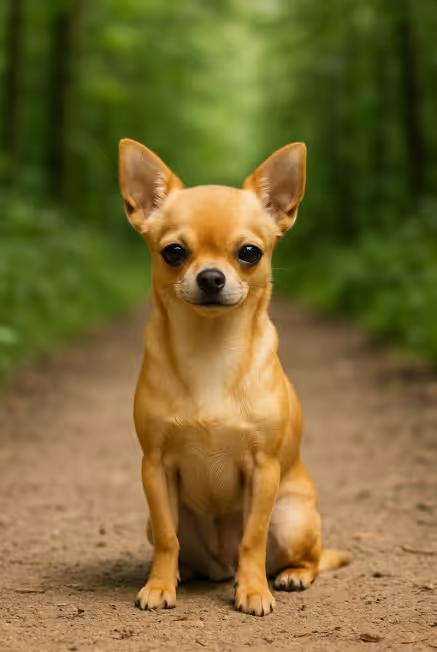The Chihuahua is the world’s smallest purebred dog—sparkly-eyed, big-brained, and deeply loyal. Available in Smooth Coat (short) and Long Coat (plumed) varieties, Chihuahuas are alert companions who love laps, learning tricks, and short daily adventures. If you’re asking “Are Chihuahuas good apartment dogs?”—absolutely. “Do Chihuahuas shed?”—yes: Smooth Coats shed lightly to moderately; Long Coats a bit more with seasonal bursts. “Are Chihuahuas hypoallergenic?”—no. Focus on kind socialization, dental care, and weather protection.

A Mesoamerican toy breed with probable roots in ancient Techichi-type dogs kept by the Toltec/Aztec peoples, the modern Chihuahua was developed in Mexico and popularized in North America in the late 19th–early 20th century. Selective breeding fixed a pocket-sized companion with a bold, watchful outlook. Today, Chihuahuas excel as loving companions and fun sport dogs (rally, agility at low jumps, tricks).
A dainty, balanced toy with an apple-shaped head and bright, expressive eyes.
Low-maintenance overall; coat type dictates brushing routine—teeth are priority.
Small body, decent motor—protect joints and trachea while staying active.
Smart, sensitive, and eager to bond—keep sessions upbeat and tiny-dog friendly.
Measure precisely—tiny dogs gain quickly.
Generally long-lived; dental and orthopedic care are key.
Choose transparency on size, dentition, and patellas—or consider rescue.
Are Chihuahuas good apartment dogs?
Yes—compact, people-focused, and satisfied with 30–45 minutes of daily activity.
Do Chihuahuas shed?
Yes. Smooth Coats: low–moderate. Long Coats: moderate with seasonal bursts—regular brushing helps.
Are Chihuahuas hypoallergenic?
No. They are not hypoallergenic.
How much exercise does a Chihuahua need?
About 30–45 minutes daily plus brain work (tricks, nose games).
Are Chihuahuas good with kids and other pets?
Best with gentle, dog-savvy kids; supervise due to fragility. Many live well with other pets after slow introductions.
Do Chihuahuas bark a lot?
They can be alert. Teach a reliable “quiet” and manage door/window triggers.
Smooth vs Long Coat—what’s different in grooming?
Smooth: weekly brush, lighter shed. Long: brush 2–3×/week, blow-dry after baths; expect more seasonal coat drop.
Are “teacup Chihuahuas” a thing?
“Teacup” is a marketing term, not a separate breed—extra-tiny dogs can carry higher health risks. Choose ethical breeders.
Do Chihuahuas have dental problems?
Often—crowded teeth lead to tartar. Daily brushing and periodic vet dentals are essential.
Should Chihuahuas wear collars?
Use a harness for walks to protect the trachea; keep ID on a lightweight collar or harness.